From sword to sword and rapier
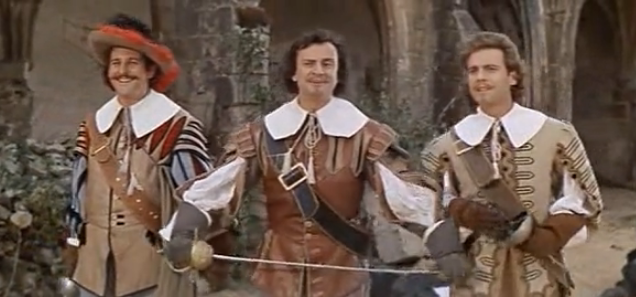
- I.e?
She loves to appear naked!
The film "Three Musketeers" based on the novel by A. Dumas (1961)
History weapons. For the first time, I had a chance to see such a rapier with a “cup” and “antennae” back in the summer of 1962 in Gurzuf in the Crimea, where the French film “Three Musketeers” was shown in the upper cinema near the bazaar with the charming Mylène Demongeot in the role of Milady. In my childhood perception, it was just something, so as soon as I returned to my place on Proletarskaya Street, I immediately retold the film itself to my comrades and ... described the swords involved in it. And it is clear that we immediately began to play musketeers and make ourselves the same swords from long and straight rods.
Scoops from soup ladles obtained with tears from parents went to the “cup”, thick wire and electrodes for welding from the nearest construction site went to the crosshairs, but the “knobs” on them were screwed from the beds. There was such a fashion at that time - to decorate the headboards with metal balls and balls. The whole structure was painted with silver for cemetery fences, after which it was possible to go and “sling” from the heart! And as soon as we didn't gouge our eyes out. But luckily everything worked out...
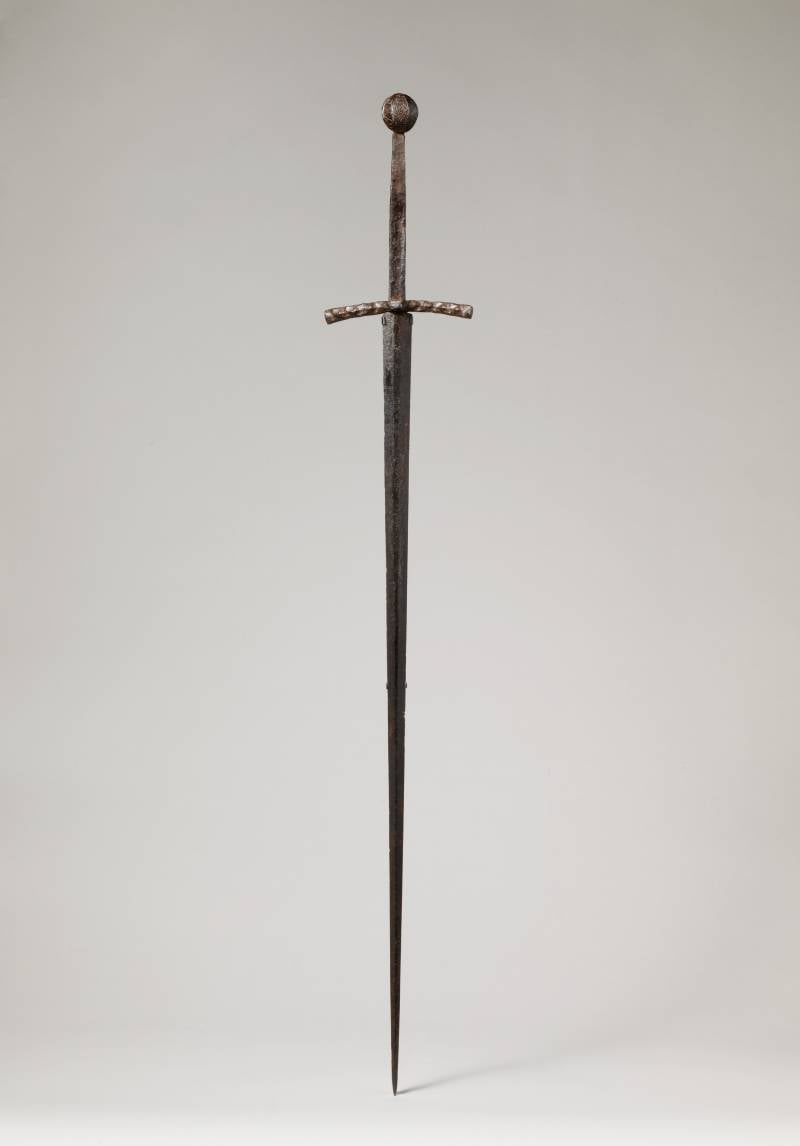
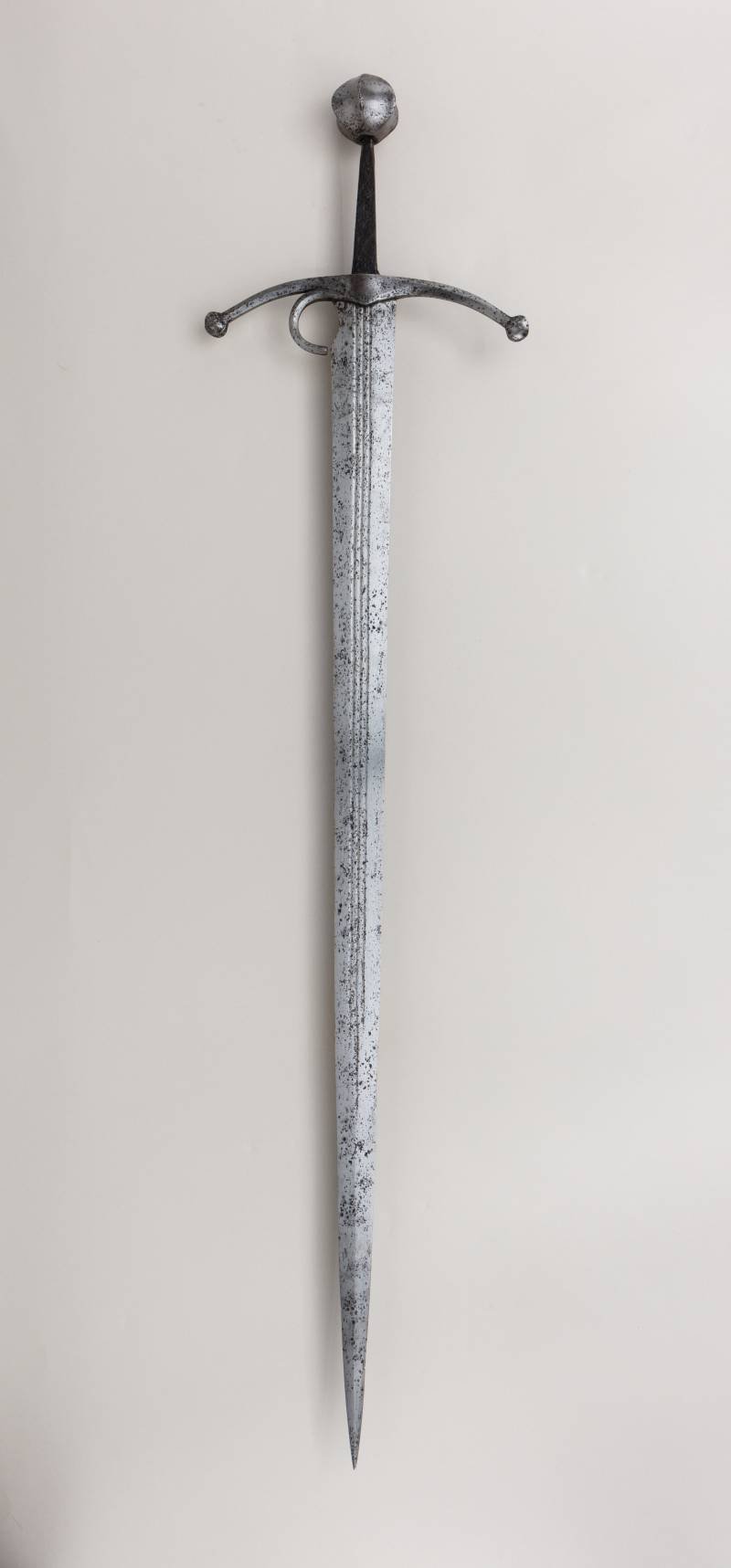
Then there were other films, the heroes of which fought with swords. So in the end, I formed a firm conviction that the sword is a typical weapon of the nobility of the XNUMXth-XNUMXth centuries. And only much later I happened to find out that the history of this type of edged weapons began much earlier.
And it so happened that swords with a rhombic elongated blade appeared back in the Middle Ages, but they were typical rider weapons, and they were worn not on the belt, but on the left side of the saddle. The reason is the large length that was needed in order to withstand infantrymen and other horsemen in battle, after the knight's spear broke in battle. It was necessary to somehow reach out to the infantryman, including the one who had fallen to the ground, and to inject his enemy knight into the joint of his armor.
There were two varieties of such a sword: konchar and estok.
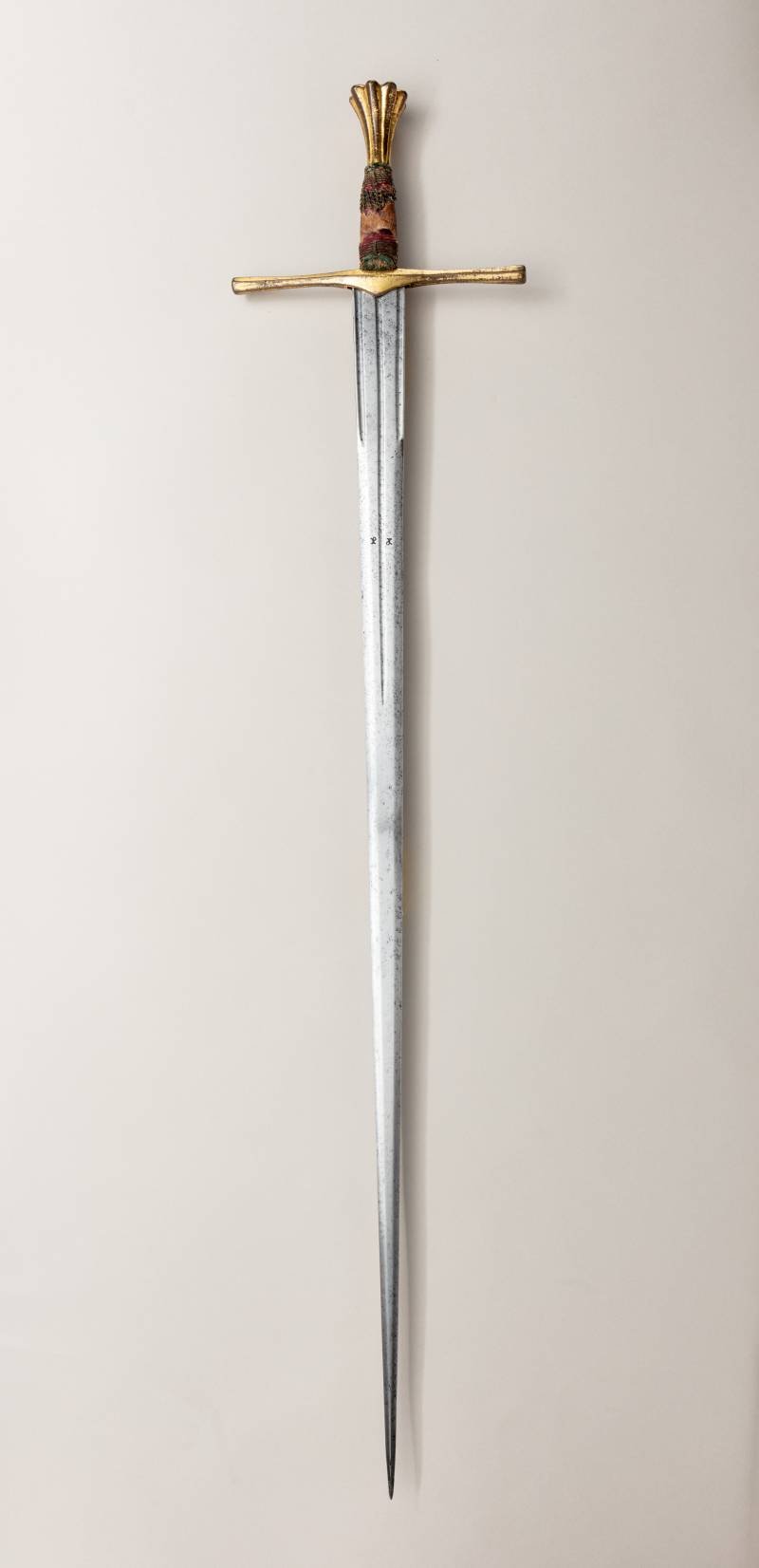
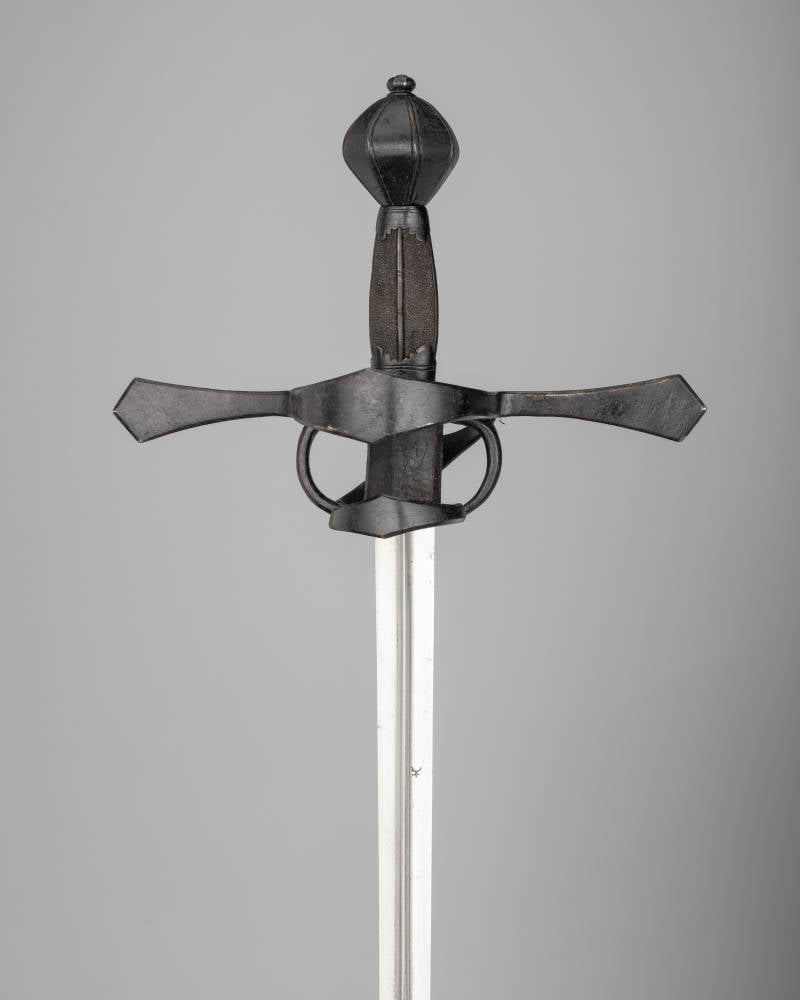
Konchar had no sharpening at all and was, in fact, a four-sided steel bar with a point designed to pierce armor with it. However, in the West, he quickly fell out of fashion after the cuirasses on the armor acquired a protruding rib in front.
Estok was also worn at the saddle and was a kind of "spare pike", but they could not only stab, but also deliver chopping blows. That's just because of its size, it was inconvenient to hang it on your belt. True, in the East it was used a little longer, and all because there were no solid forged cuirasses with a rib in the middle!
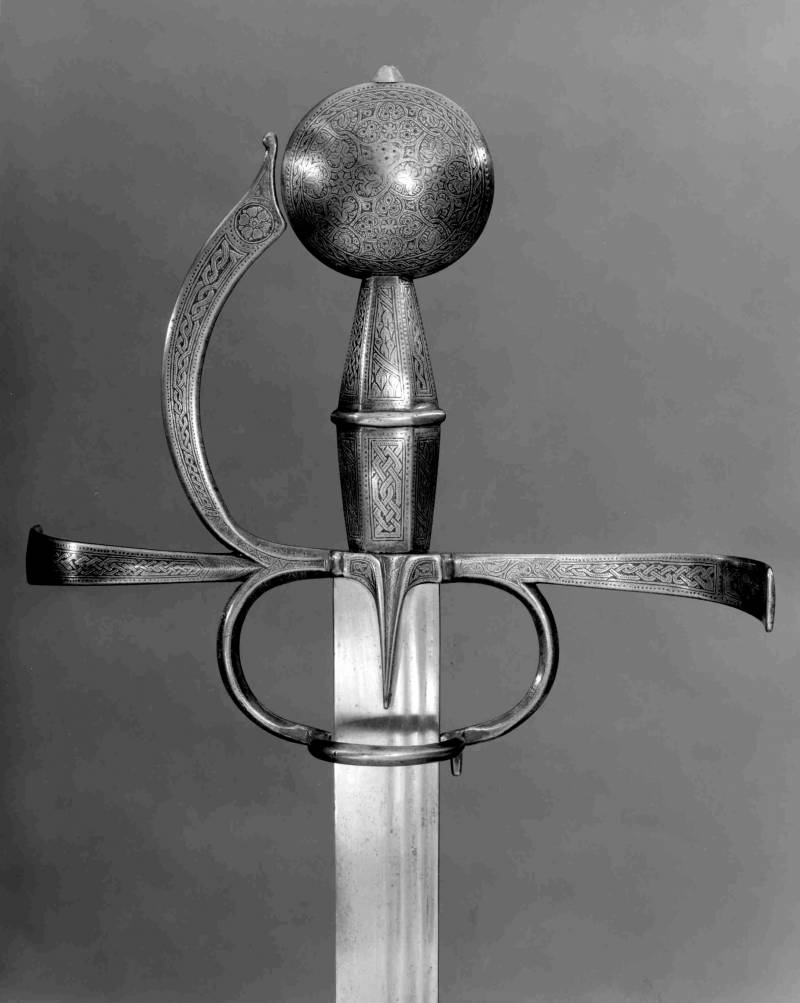
At the same time, any sword on the belt emphasized the person's belonging to the nobility.
That is why, as early as 1460, shorter and lighter thrusting swords appeared in Spain that could be worn with civilian clothes. And here they got their special name: espada ropera, that is, “sword for clothes”, which gave rise to two varieties of these weapons at once: espada - “sword”, and ropera - “rapier”. By itself, this name emphasized their civil, or rather, court character, since the heavier sword (it was called the “big sword”) continued to be worn with knightly armor.
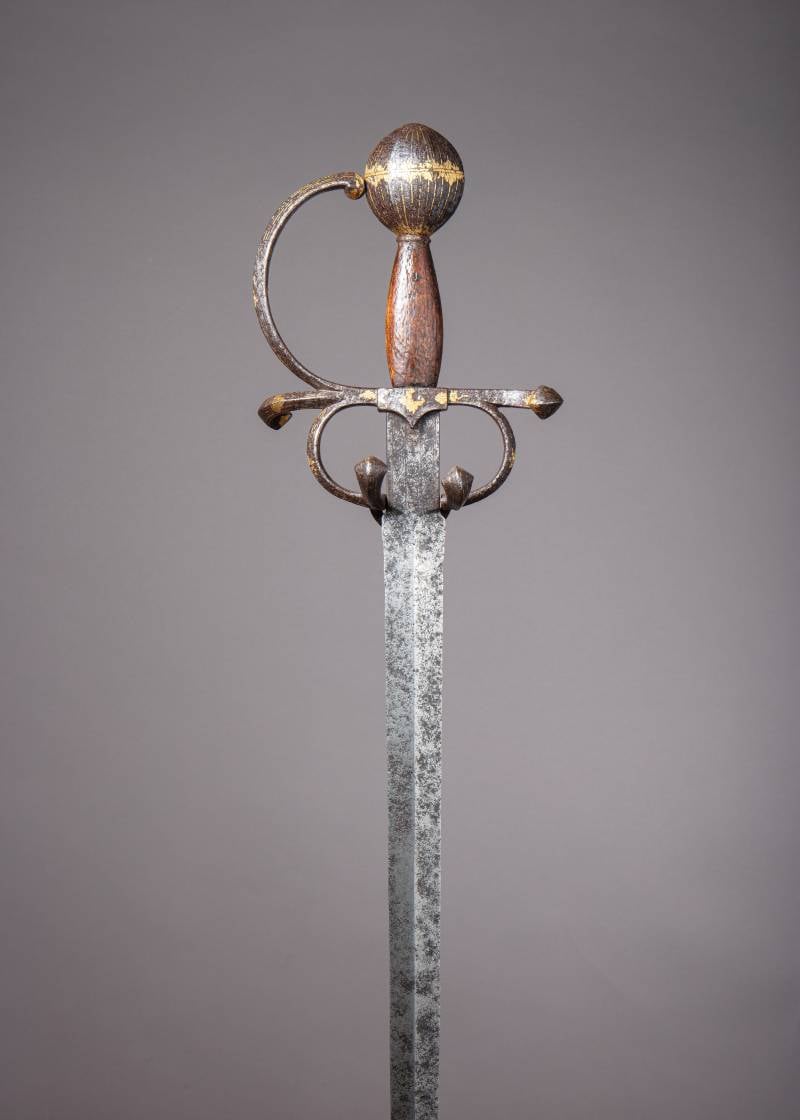
It immediately became clear that, despite the low weight, this weapon is very effective, primarily for "showing things off", which now no longer required wearing armor, and much more. A couple of witnesses and a secluded place were enough to settle scores with their enemy.
But since this new weapon was used with a civilian suit, that is, without a plate glove, care had to be taken to protect the hand. And if the first swords had relatively simple hilts with a straight cross and one or two protective rings on both sides of the blade, then later, namely in the XNUMXth century, very complex guards appeared, consisting of many intertwined metal rods.
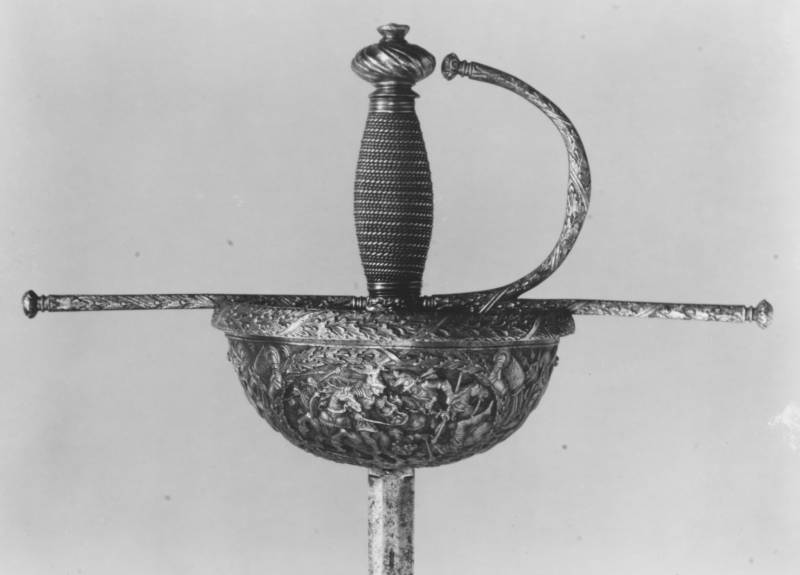
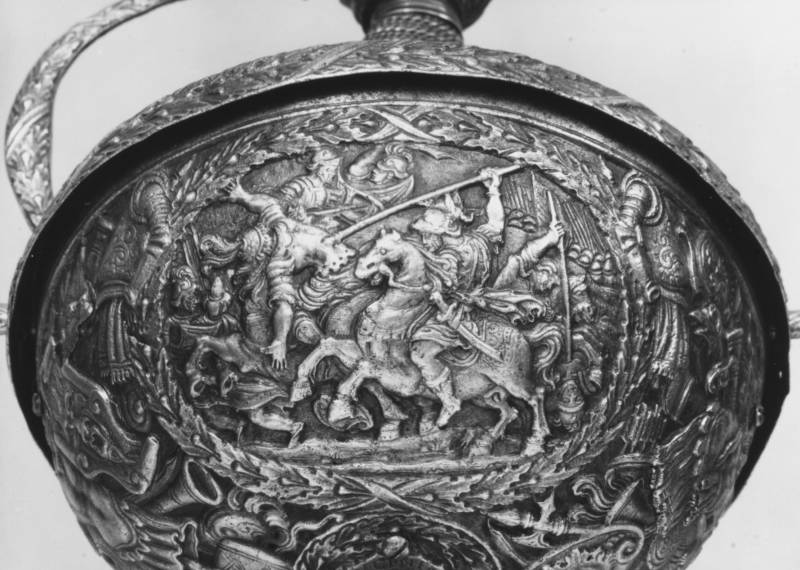
New weapons began to develop and improve very quickly. There were also new types of blades. For example, swords with a single-edged flat blade, double-edged only at the end, with which it was convenient to apply not only stabbing, but also chopping blows. Gunsmiths began to make especially durable faceted blades - three-, four- and even hexagonal, for purely piercing purposes.
If the blade was rigid, then the Italians called such a sword "stocco", but if the blade was thin and flexible, then "puma" - "spring". The last blades with a bowl-shaped guard and a cruciform crosshair began to be called rapier, and the weapon itself became a rapier. That is, if a sword is a variant of a lightweight piercing-chopping sword of the end of the medieval era, then a rapier is a lightweight version of a sword, intended mainly for thrusting, since its blade is often not even sharpened.
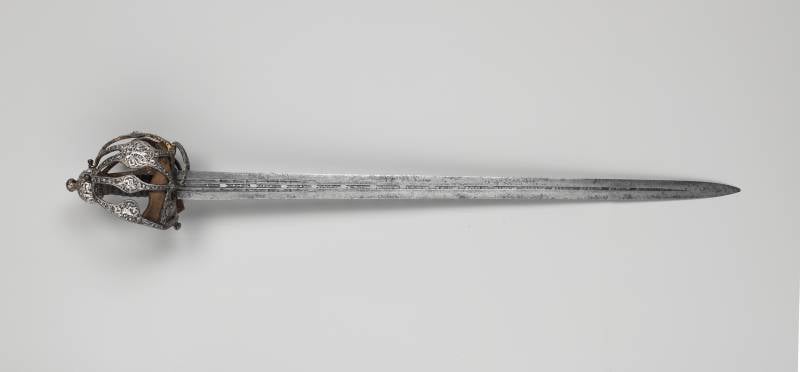
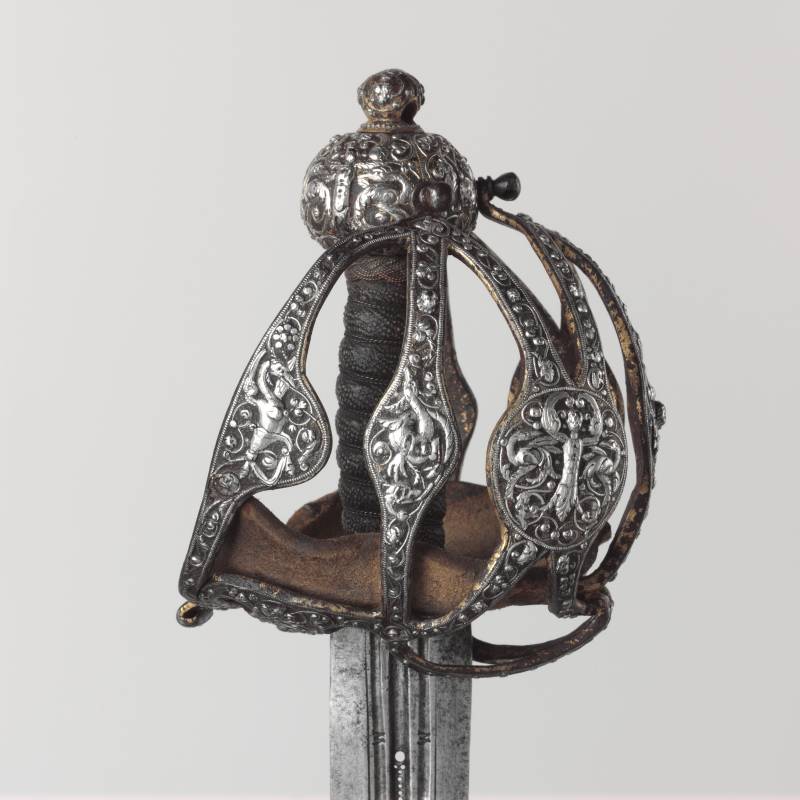
For a hundred years, namely by 1560, the wearing of a sword became common for infantrymen, since in most cases they no longer wore armor. For them, the sword has become an excellent weapon of self-defense.
But the swords also became the weapons of the plate cavalry - reiters and cuirassiers. They were heavier than infantry. But in the same way they had a complex guard made of metal rods, similar to a wicker basket. The desire to inflict as strong a chopping blow as possible on an infantryman with such a sword led to the appearance of a broadsword with a chopping blade with a blade sharpened only on one side and an inclined handle, which remained in service with the cuirassiers.
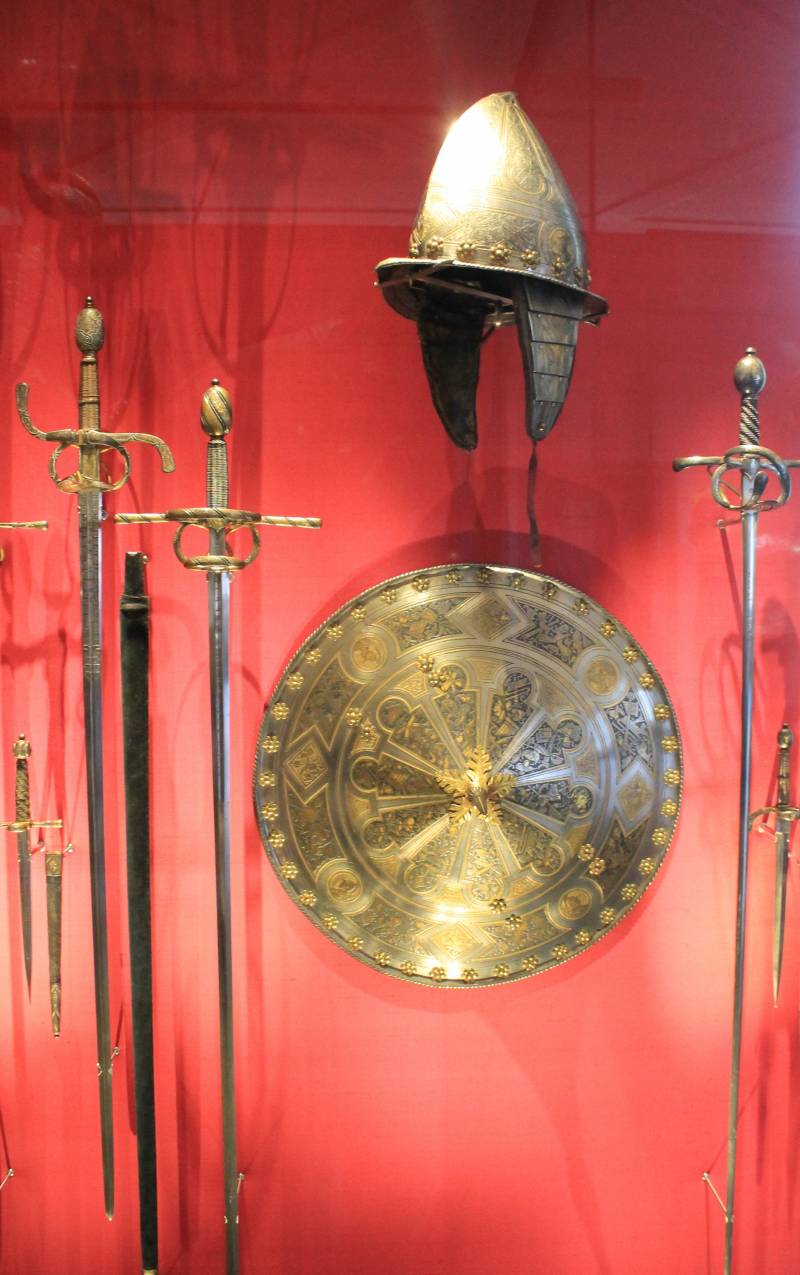
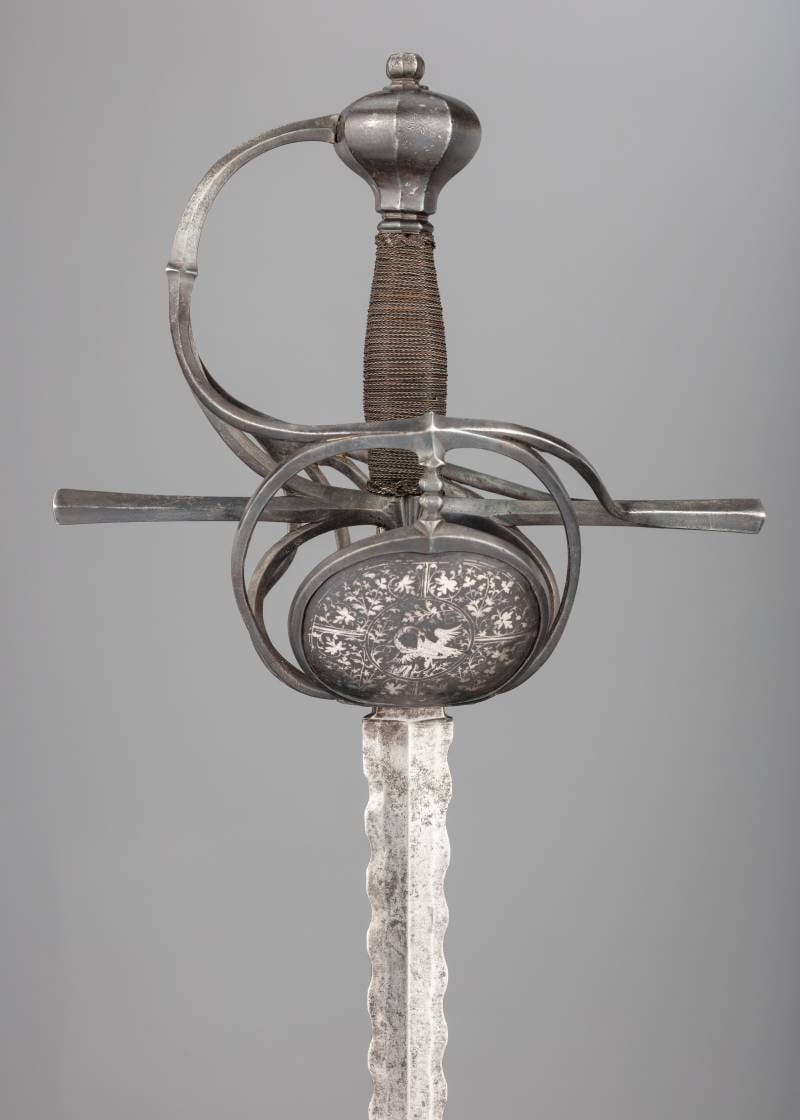
But the rapier blades were specially made extremely flexible and were even sold for the sake of advertising - bent into a ring.
Spanish blades from the city of Toledo were especially famous for their quality. But very soon, the Italian craftsmen from Brescia and Belluno caught up with their Spanish colleagues and began to make blades with the same quality. In particular, the master Ferrara from Belluno, also after 1560, put up for sale blades bent into a ring.
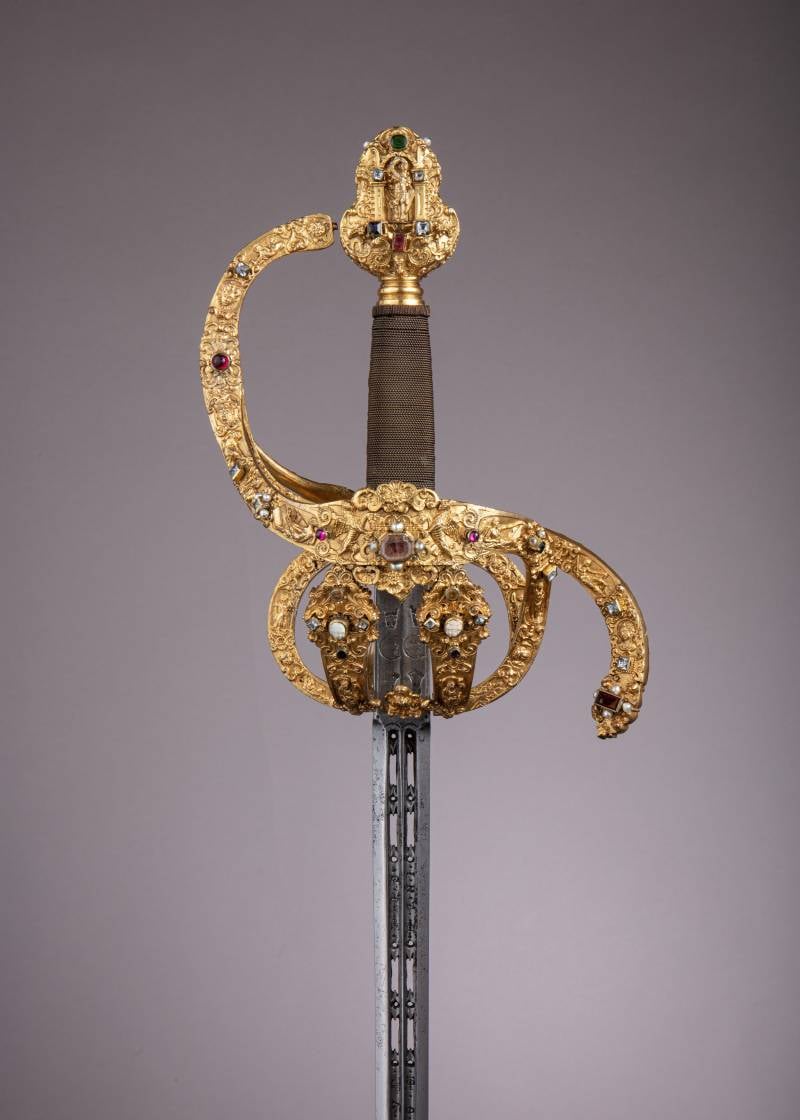
Over time, the skill of gunsmiths has grown even more. As early as the middle of the XNUMXth century, blades began to be made with deep valleys and sharp high ribs, while the valleys were perforated with many through holes, so that such a blade seemed transparent to the light. Well, it is clear that since swords were worn with civilian clothes, their handles immediately began to be decorated in all available ways, so long as they were not inferior to the richness of the costume itself!
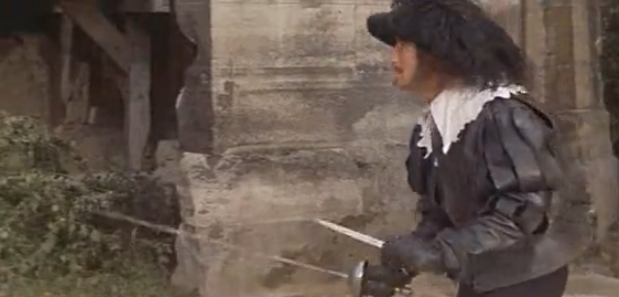
Possession of a rapier no longer required special strength, which in this case was replaced by dexterity. Numerous schools arose where the nobles learned the high art of swordsmanship.
But, in fact, there were only two styles of fencing on rapiers and swords - Italian (earlier), with a frontal position of the body in relation to the enemy, and French (later), in which the fencer was turned to his right side. In the first case, a parrying dagger, often included in a pair set, could be used along with a sword. In the second, the use of a dagger was not provided, but it was necessary to strengthen the blade of the sword at the hilt in order to effectively parry its blows, which could previously be taken on a dagger.
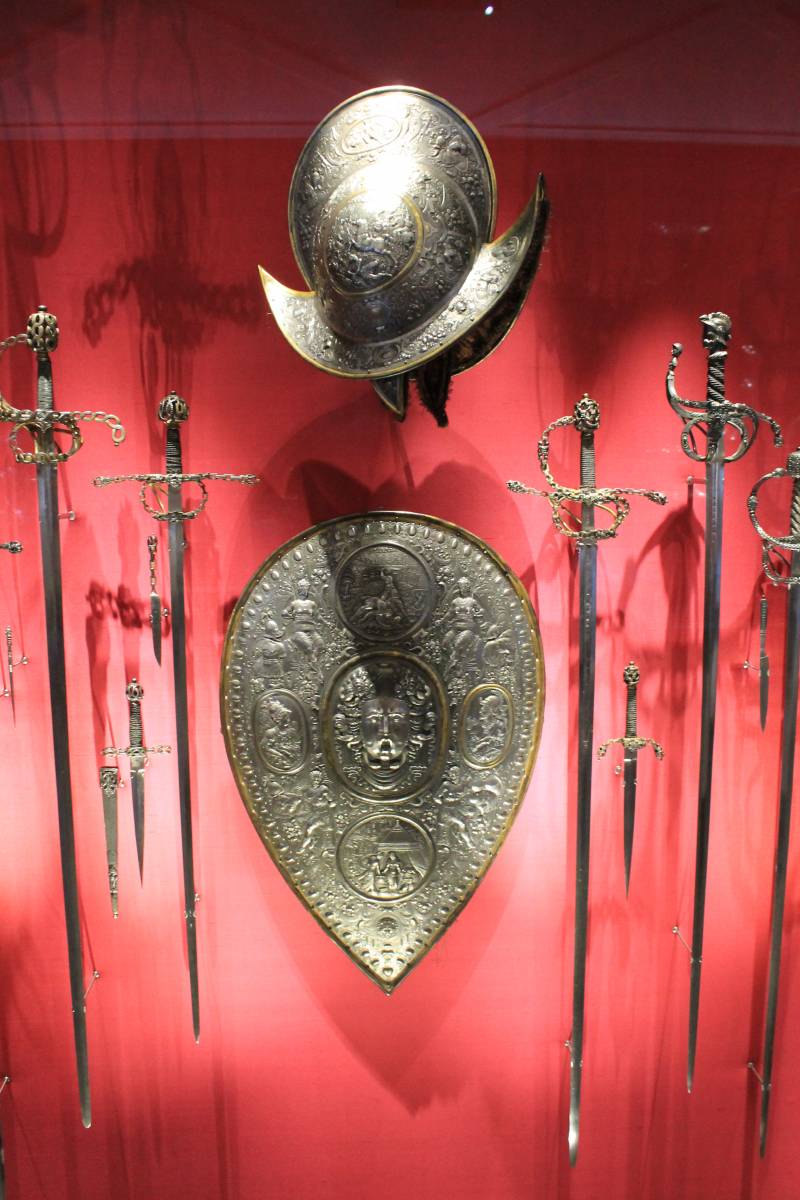
And it is not surprising that those who mastered the art of swordsmanship immediately began to use it in duels with each other, which led to the mass death of representatives of the nobility. That is why in France, Cardinal Richelieu on February 6, 1626, strictly forbade duels, believing that a nobleman could shed his blood only in the service of the king!
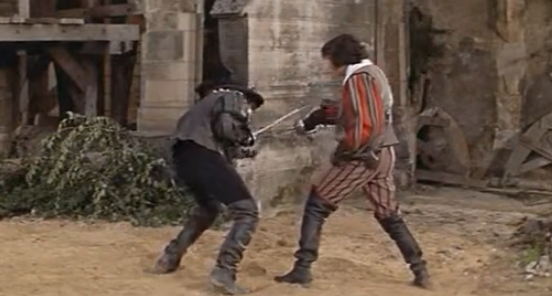
In the XNUMXth century, swords were worn on a belt, with a sheath inserted into a triangular blade made of many straps with buckles. A special strap pulled the blade in such a way that the sword hung in an oblique position.
Fashion changed in the XNUMXth century. Now the sword began to be worn on a wide sling, worn over the right shoulder. And it is clear that people with the means immediately began to embroider it with silver and gold, but for those who did not have enough money for the entire sling, such as Porthos from the Three Musketeers by Alexandre Dumas, they showed it only from the front, and the part that was on her back, covered with a cloak!
Swords and rapiers continued to exist in the future, but that's a completely different story ...
Information